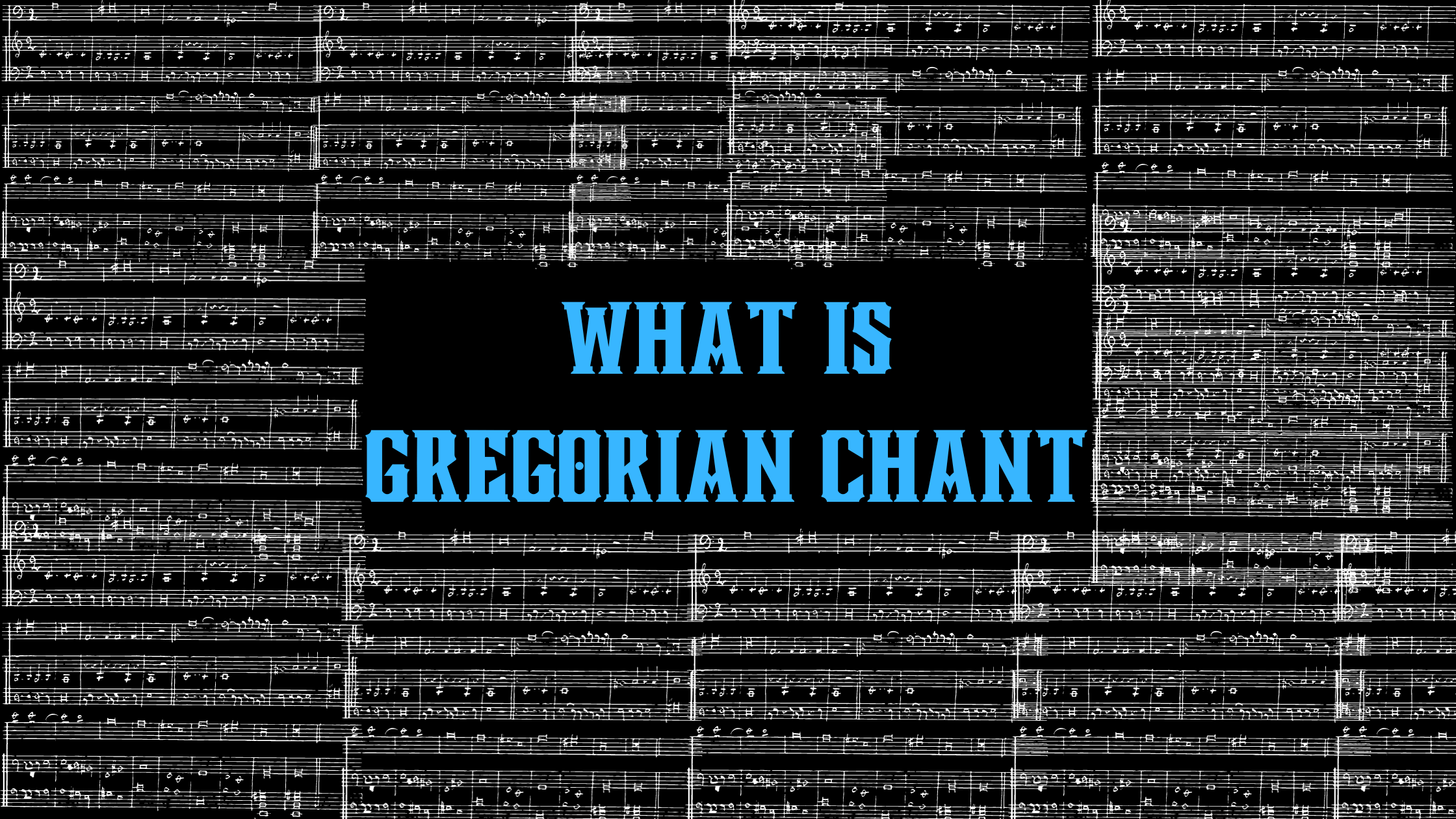KEY TAKEAWAYS: GREGORIAN CHANT SUMMARY
- Gregorian chant, a sacred tradition, is integral to Western music history.
- Early Christian roots reveal its role in worship and the development of musical notation.
- In the Middle Ages, monastic communities preserved and refined chant, influencing medieval music theory and secular music.
- The Renaissance witnessed a revival of Gregorian chant, and its influence continues to inspire modern composers.
- Key characteristics include modal scales and melodies evoking rich emotions.
- Deep integration of text and music creates spiritual resonance in liturgical settings.
- Gregorian notation, with suggestive neumes, allows for nuanced and expressive performances.
- This timeless tradition’s enduring legacy connects us to spirituality, history, and the power of music.
Introduction
Gregorian chant, a captivating and ethereal form of liturgical music, has left an indelible mark on Western music history. Rooted in the traditions of the early Christian Church, this sacred music style has transcended centuries, preserving its spiritual and cultural significance. In this exploration, we will delve into the world of Gregorian chant, tracing its origins, and understanding its profound impact on the musical landscape.
The Significance of Gregorian Chant in Western Music History
Gregorian chant, often referred to as plainchant, stands as one of the most pivotal and enduring forms of musical expression in Western history. Its significance lies not only in its hauntingly beautiful melodies but also in the role it has played in shaping the very foundations of Western music.
Throughout the centuries, Gregorian chant has been more than just music; it has been a powerful means of conveying religious devotion and spirituality. Its timeless quality has allowed it to transcend generations, making it an essential part of the liturgy of the Catholic Church for over a thousand years.
Early Christian Roots
The Role of Plainchant in Early Christian Liturgy
To understand Gregorian chant fully, we must first journey back to the early Christian Church. In these formative years of Christianity, plainchant emerged as the primary mode of musical expression in liturgical worship. Its simplicity and clarity allowed congregants to participate actively in worship, even without formal musical training. Chants were sung in unison, creating a sense of unity among worshippers, and were deeply intertwined with the sacred rituals of the Church.
To the present day the designation “Gregorian” constitutes what may well be called the central problem of the chant, because it bears directly on the question of its origin, both in time and locale. If the designation can be proved to be historically correct, it follows that the traditional music of the Church goes back to the period ca. 600 and that it emanated from its spiritual center, i.e., Rome. This view is backed up by a very old tradition according to which Gregory was the author of a liber antiphonarius, i.e., a book containing the liturgical chants, probably both for the Mass and the Office
(Source: Apel, W. (1956). The Central Problem of Gregorian Chant. Journal of the American Musicological Society, 9, 118-127.
The Development of Chant Notation
The preservation of Gregorian chant was made possible by the development of chant notation. In the early stages, chants were passed down orally from one generation to the next. However, as the Christian Church spread across Europe, the need for a standardized method of notation became apparent. The result was the creation of neumes, the earliest form of musical notation, which provided a rudimentary guide to the melodies. This innovation ensured that Gregorian chant could be faithfully reproduced and passed down through the ages, contributing to its enduring legacy.
Gregorian Chant in the Middle Ages
Monastic Communities and the Preservation of Chant
During the Middle Ages, Gregorian chant found a sanctuary in the heart of monastic communities. These dedicated monks and nuns played an instrumental role in preserving and propagating this sacred music tradition. Within the walls of monasteries and convents, chant was not merely a form of artistic expression; it was a spiritual practice. Monks and nuns chanted the divine offices daily, marking the passage of time with their voices raised in devotion.
The monastic commitment to preserving chant extended to the meticulous copying of chant manuscripts. Monasteries became centers of scholarship and transcription, ensuring that the chants were faithfully transmitted from generation to generation. This painstaking effort helped safeguard the purity of Gregorian chant and contributed to its longevity.
Influence on Medieval Music Theory
Gregorian chant’s influence extended beyond the walls of monasteries, leaving an indelible mark on medieval music theory. The intricate modal system of chant, with its unique scales and melodic patterns, served as a foundation for the development of Western music theory. Musicians and theorists of the Middle Ages studied and drew inspiration from the chant’s modal structure, paving the way for the rich polyphonic compositions of the Renaissance.
Chant’s impact on medieval music theory wasn’t limited to melodies alone. Its rhythmic fluidity, characterized by the absence of a fixed meter, challenged traditional rhythmic conventions. This departure from established rhythmic norms spurred innovation in musical notation and performance practices, setting the stage for the evolving musical landscape of the Middle Ages.
Chant in Religious and Secular Contexts
While Gregorian chant was primarily associated with religious settings, its influence extended into secular domains during the Middle Ages. Beyond the walls of churches and monasteries, chant found its way into the courts of medieval monarchs and nobility. Secular songs often incorporated elements of chant, creating a unique fusion of sacred and secular musical traditions.
Moreover, the troubadours and trouveres of the medieval courts drew inspiration from the chant’s expressive qualities. They adapted the chant’s melodic contours and lyrical themes into their own compositions, contributing to the development of secular music in the troubadour tradition. This interplay between sacred and secular music during the Middle Ages enriched the cultural tapestry of the time.
Renaissance and Beyond
Gregorian Chant During the Renaissance
The Renaissance period witnessed a revival of interest in Gregorian chant. As composers and scholars sought to reconnect with the musical roots of Western civilization, chant became a source of inspiration. Chant melodies found their way into the works of Renaissance composers, often serving as the basis for polyphonic compositions.
During this era, efforts were made to transcribe and notate chant more accurately. Scholars recognized the need to preserve the authentic forms of the chants, free from the embellishments that had accumulated over the centuries. This renewed interest in chant laid the groundwork for its continued prominence in liturgical settings.
Chant in the Modern Era and Its Revival
In the modern era, Gregorian chant experienced a resurgence of popularity, fueled by a desire to reconnect with the past. Chant recordings became widely available, allowing a broader audience to appreciate its timeless beauty. Additionally, scholars delved deeper into the historical sources, shedding light on the nuances of chant performance as it was practiced in the past.
Gregorian chant’s revival also extended beyond religious contexts. It found its place in the secular world, appearing in film scores, popular music, and even New Age compositions. The chant’s hauntingly evocative melodies resonated with modern audiences, transcending the boundaries of time and culture.
Notable Composers and Scholars in Gregorian Chant
Throughout its history, Gregorian chant has been studied and celebrated by notable composers and scholars. From the pioneering work of Dom Prosper Guéranger in the 19th century to contemporary scholars like Mary Berry and David Hiley, individuals have dedicated their lives to unraveling the mysteries of Gregorian chant. Composers like Arvo Pärt and John Tavener have drawn inspiration from chant in their own compositions, infusing new life into this ancient tradition.
Characteristics of Gregorian Chant
Modal Scales and Melodies
Gregorian chant, with its timeless and evocative melodies, is characterized by the use of modal scales. These modal scales, also known as church modes, differ from the familiar major and minor scales of Western music. They imbue Gregorian chant with a distinctive and contemplative quality that sets it apart.
Each mode has its unique set of intervals and melodic patterns, lending a distinct emotional and spiritual color to the chants. For instance, the Dorian mode is often associated with penitential and somber chants, while the Phrygian mode conveys a sense of sorrow and lamentation. The use of modal scales allows Gregorian chant to evoke a wide range of emotions, making it a versatile and expressive form of music.
Textual Considerations and Liturgical Use
One of the defining features of Gregorian chant is its intimate connection with sacred texts. Chants are composed to complement and enhance the liturgical texts of the Roman Catholic Church. The text is not merely an accompaniment to the music; it is the heart and soul of the chant.
The text dictates the melodic contour
and phrasing of the chant, resulting in a seamless integration of word and melody. The rhythmic patterns of the text influence the pacing and flow of the chant, creating a deep sense of unity between music and meaning. This symbiotic relationship between text and melody makes Gregorian chant a powerful vehicle for conveying the spiritual and emotional content of the liturgy.
Gregorian Notation and Its Unique Features
Gregorian chant is notated using a specialized system known as Gregorian notation. Unlike modern Western musical notation, Gregorian notation is devoid of the elaborate rhythmic and dynamic markings we are accustomed to. Instead, it provides a skeletal framework for the melodies, relying on the skill and interpretation of the singer to bring the chant to life.
One of the unique features of Gregorian notation is the use of neumes, small symbols placed above or below the text, to indicate melodic direction and ornamentation. Neumes are concise and suggestive, leaving room for individual interpretation. This flexibility allows for a nuanced and expressive performance that is deeply attuned to the text and the liturgical context.
Conclusion
In recapitulating the historical journey of Gregorian chant, we discover a musical tradition that has transcended time and cultural boundaries. From its early Christian roots to its enduring presence in the modern era, Gregorian chant has left an indelible mark on Western music history.
Its modal scales and melodies, rooted in ancient church modes, continue to captivate listeners with their timeless beauty and spiritual depth. The careful consideration of text and its seamless integration into the music elevate Gregorian chant to a form of worship and expression that resonates with the soul.
Gregorian notation, with its unique and suggestive symbols, invites singers and scholars to explore the depths of this ancient tradition, breathing life into centuries-old melodies.
As we reflect on Gregorian chant’s journey through time, it becomes evident that its enduring legacy extends far beyond the walls of the medieval monastery or the confines of the church. It lives on in the hearts of those who seek solace and inspiration in its melodies, and it thrives in the hands of modern composers who continue to draw from its wellspring of spirituality and beauty.
In today’s music landscape, Gregorian chant stands as a testament to the enduring power of music to connect us with our past, our spirituality, and the profound depths of human emotion. It is a treasure that continues to enrich and elevate the world of music, reminding us of the enduring legacy of this timeless tradition.


